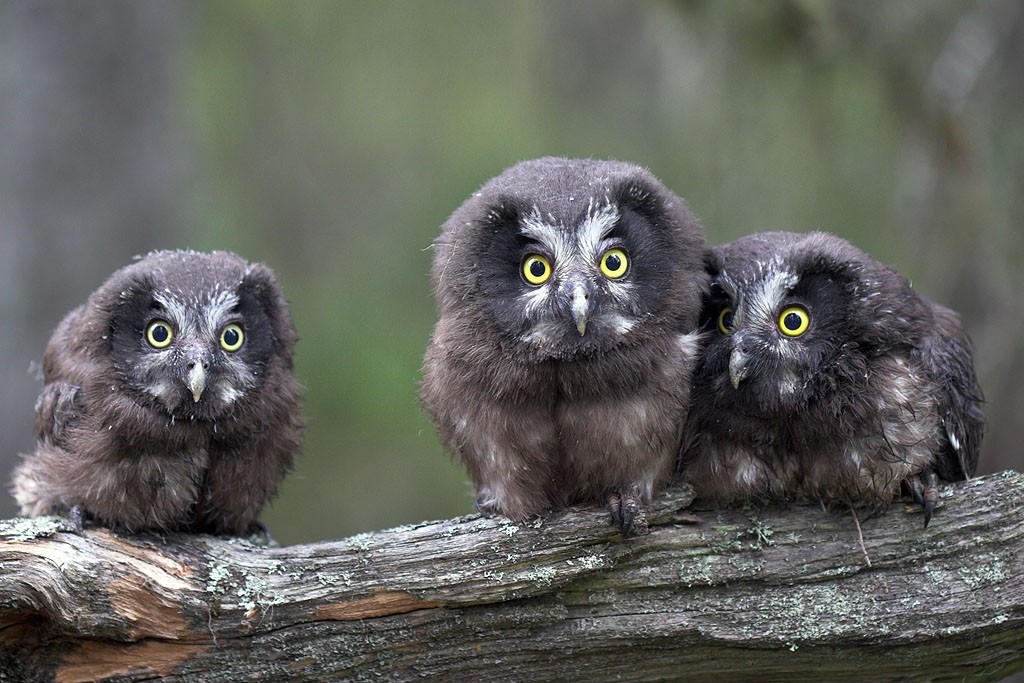Boreal Owl
A species of Saw-whet Owls, Also known as Tengmalm's Owl, Sparrow Owl Scientific name : Aegolius funereus Genus : Saw-whet Owls
Boreal Owl, A species of Saw-whet Owls
Also known as:
Tengmalm's Owl, Sparrow Owl
Botanical name: Aegolius funereus
Genus: Saw-whet Owls
Content
Description People often ask General Info
Description
The boreal owl is 22–27 cm (8.7–10.6 in) long with a 50–62 cm (20–24 in) wingspan. It is brown above, with white flecking on the shoulders. Underparts whitish streaked with rust. The head is large, with yellow eyes and a white facial disc, and a "surprised" appearance. The beak is light yellow colored rather than dark like its relative the northern saw-whet owl. Their flight is relatively noiseless and straight. Young birds are chocolate brown. 
Size
23-25 cm (9-10 in)
Life Expectancy
8 years
Nest Placement
Cavity
Clutch Size
2 - 9 eggs
Incubation Period
1 brood
Number of Broods
26 - 32 days
Nestling Period
27 - 36 days
Feeding Habits
Boreal Owl's diet consists mainly of small mammals, such as voles, mice, shrews, and squirrels, but also includes birds and various invertebrates. Largely nocturnal, boreal Owl perch-hunts at night, relying on their talons to capture prey, although daylight hunting occurs in northern regions with short summer nights. Indigestible material is regurgitated daily as pellets.
Habitat
Boreal Owl predominantly inhabits mixed-wood and conifer forests, including environments rich in spruce, aspen, poplar, birch, and fir. These birds are adapted to the extensive boreal forests of northern North America and Eurasia as well as high-elevation, subalpine forests in Canada and the western United States. They favor areas with uncrusted snow under trees during winter for foraging, exploiting the easier access to prey. In spring, boreal Owl may also utilize clearcuts and adjacent agricultural fields, taking advantage of the open spaces to locate small mammals.
Nest Behavior
Boreal Owl’s male presents multiple potential nest sites within his territory for the female to choose from. Nesting occurs once a year, with the female laying her eggs in the selected cavity and both parents participating in incubating the eggs and raising the young.
Nest Characteristics
Boreal Owl typically nests in tree cavities formed by woodpeckers or natural tree holes, as well as in man-made nest boxes. The nests are located in older mixed-conifer forests or younger ones with nest boxes. No additional materials are used for construction.
Dite type
Carnivorous
People often ask
General Info
Feeding Habits
Bird food type
Bird Feeder Type

Platform
Sounds
Call
Recording location: Belgium
Song
Recording location: Belgium
Behavior
Boreal Owl exhibit nocturnal and crepuscular behaviors, often hunting under the cover of darkness. They are stealthy hunters, silently gliding down to snatch prey with their sharp talons. As solitary creatures, reliance on vocalizations helps maintain their territories and aid in courtship rituals. The breeding season displays a fascinating divergence with monogamous pairings in North America, while some European males may engage with multiple partners. The male's dedication extends to prolonged pre-nesting feeding and support during nesting by supplying the female with nourishment. Boreal Owl's territory defense is uniquely focused around the nesting site, contrasting with their non-defensive approach to broader foraging areas.
Species Status
Not globally threatened.
